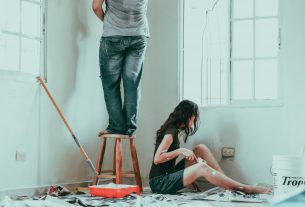
A new study from Australia shows that 30-minute stints of standing may relieve back pain, while not adversely affecting productivity.
In the study, a group of Australian office workers alternated between sitting and standing every 30 minutes for a week; they reported that they felt less tired, and experienced less lower back pain and leg pain, than when they stayed sitting all day.
The results of this study could change the way workplaces operate around the world. Here in the U.S., Americans spend at least an estimated $50 billion dollars treating back pain each year.
Research shows that office workers spend about 75% of their workday sitting in a chair. However, further research shows that five or more hours of sedentary sitting is the health equivalent of smoking a pack and a quarter of cigarettes.
Sitting may not seem like that big of a deal, but in fact, long periods of sitting have been linked to everything from cancer to heart disease, diabetes to depression, and every hour spend sitting is said to cut 22 minutes from our lifespan.
However, as the new study confirms, alternating between standing and sitting throughout your workday can have a great effect on your overall health.
“Our results confirm what we expected — that introducing regular breaks across the workday leads to improvements in fatigue and musculoskeletal symptoms compared to sitting all day.” said Alica A. Thorp, a postdoctoral research fellow at the Baker IDI Heart and Diabetes Institute in Melbourne, Australia, who led the study.
The study saw 23 overweight and obese Australian office workers split into two groups. For one workweek, one group alternated sitting and standing every 30 minutes throughout their workday, using an adjustable workstation. The other group sat at their desks like normal. After one week, the groups switched. People in the sit-stand group wore a physical activity monitor on their right thigh to gauge their sitting, standing, and walking times.
After each week, all the participants filled out a questionnaire measuring their fatigue levels, musculoskeletal discomfort, feelings about their own productivity, and how well they liked the adjustable workstation.
People in the sit-stand group reported feeling less fatigued, having less musculoskeletal symptoms in the lower back, ankles, and feet. They were more focused, and better able to concentrate.
While there was no real difference in the productivity between the groups, there was a trend towards better productivity, and less impatience and irritability, in the sit-stand group.
The question is, how can you translate this science into your own workday? Obviously, it’s in your best interest to take some sort of break from sitting every 20 or 30 minutes. Even if you don’t have the time to walk around, any kind of moving or stretching will help. Even just standing for a few moments, while in a meeting or on a phone call, will prove very helpful
Because of the healthcare costs associated with sitting, more and more companies are offering their employees alternatives to the sedentary desk jockey lifestyle. One popular option is a standing desk.
There are many different types of standing desks. Some are fixed-height, some are adjustable, and there are even desks with treadmills or stationary bikes attached for the more ambitious worker. Any of these is a good option, it all comes down to what you are most comfortable with.
What is important to keep in mind, however, is to not start standing for your entire workday. Standing for too long also puts excessive strain on your body. Ideally should be a 70:30 mix of standing and sitting. For this reason, an adjustable sit-stand desk is probably your best option.
If a standing desk workstation is not an option at your workplace, even just moving more while you’re sitting will help. An active desk chair, like a wobble stool or a balance ball, supports constant movement throughout the day by being just unstable enough to keep your muscles in motion.



